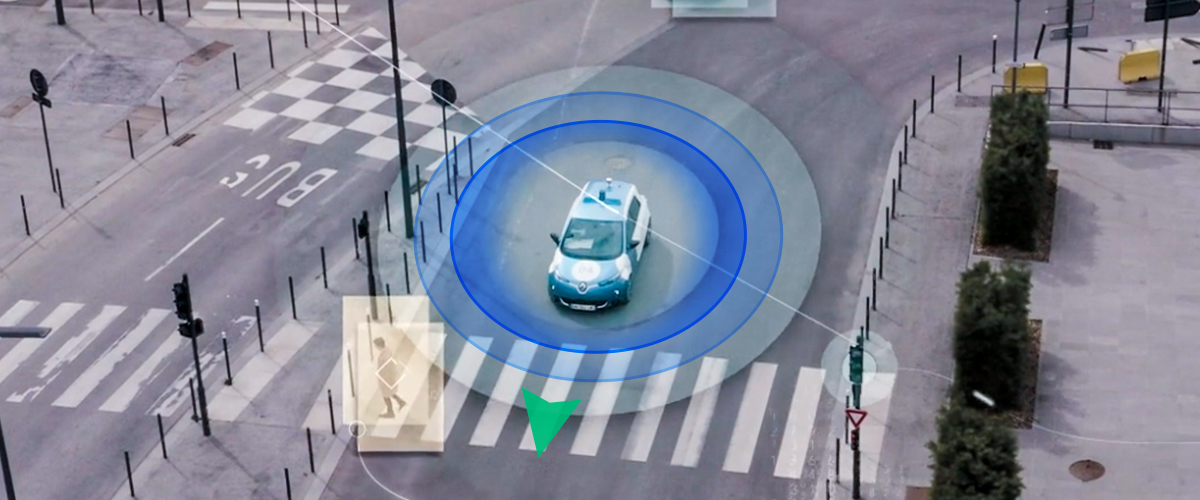

It’s true. Driving isn’t like it was 50 years ago. So much the better! Many factors have changed over the years, including the legislation. Speed limits have been reduced, drink-driving laws have been introduced and there is now a requirement both for seat belts and airbags.
These compulsory changes have saved lives. In 35 years, the number of deaths on the road has been cut by 80%. Despite ever-increasing levels of traffic, this is a marked reduction – but it needs to come down still further.
But road safety also owes a lot to LAB, the laboratory founded 50 years ago by car manufacturers Renault and Peugeot Citroën to study accidents, biomechanics and human behaviour. Stéphane Buffat, its director, explains the organisation’s role.
"Using data from real accidents, LAB is able to analyse safety issues. We use the knowledge gained in naturalistic studies to put these issues into perspective and identify types of hazardous scenario. LAB participates in European studies to share our observations and analyses with all of the players in the safety field, who can then include them in their action plans."

Technical developments to seat belts and airbags over the last 40+ years are the result of efforts at LAB. Today, its work is focused on the new driving aids and on increasingly sophisticated vehicle technologies.
Driving aids for greater road safety
As our vehicles become ever more connected, we are benefiting from new services and technologies, which often have a positive impact on safety. The New Clio, for example, with its comprehensive package of driving aids achieves a 5-star rating in the famous Euro NCAP test. Driving aids, or ADAS (Advanced Driver Assistance Systems), are becoming more and more common. From Park Assist to Lane Departure Warning, all are designed to reassure the driver about the safety of his/her vehicle. Some very advanced aids, such as adaptive cruise control and active emergency braking, will actually be compulsory in Europe from 2022.
Some of these technologies are already fitted in our cars. As Laurette Guyonvarch, an expert at LAB who specialises in driver behaviour, explained: "The improvements to the onboard experience, which LAB is helping to develop, are some steps ahead of the regulations. Our aim is to provide manufacturers with realistic behavioural data."
The driver is still the boss of the car
Whilst technology support has become essential for reassuring the driver and passengers, the human factor remains key to safer mobility. For now, familiarity with and use of these aids can be improved, according to Laurette Guyonvarch: “Various studies that we have carried out demonstrate that ADAS are not always used correctly, so this suggests a need for training”. Acceptability studies, of what the driver will tolerate when driving, could also help to improve the way that ADAS are used. “Audible warnings, for example, could be perceived as irritating. They are only used when any danger is imminent”, she said. Although the human factor is essential to the understanding of the risk factors, improvement to the ergonomics of the interaction between the person and the machine is still the main stumbling block.
However, unlike in the field of air safety, the analysis of human behaviour has only recently become part of the study of risks and safety on the roads. Studies by LAB reveal a major contradiction in behaviours, currently in relation to driving aids and, in future, (probably), in relation to autonomous vehicles.

People are naturally resistant to any new technology, but once they have mastered it, they are ready to trust it and go along with it. Laurette Guyonvarch
Today, the integration of new, onboard technologies in vehicles relies on an excellent knowledge of how humans behave, their responsiveness to and capacity to accept said technologies. “Aids are improving all the time and becoming easier to use, but they require human supervision for those situations that the machine cannot handle”. Will it be any different with autonomous vehicles?

Autonomous vehicles: living in harmony with the machine
The term is on everyone’s lips, and there are more and more developments, including at Groupe Renault (remember the three EZ concept cars)? The autonomous vehicle is sometimes seen as a panacea for road safety issues.
The level of a vehicle’s driving autonomy is measured on a scale from 0 to 5. At 0, the driver must remain active and attentive in every situation, whilst at 5, human intervention is, in theory, no longer necessary.

To arrive at that level, total coordination of the driver and the machine is needed. With the expected use of increasingly autonomous vehicles in the future, there will come a time when « conventional » and driver-less vehicles will co-exist. For Laurette Guyonvarch, this is a major challenge. "People are hard to manage for an autonomous vehicle. To make a decision, a person is able to consider many factors that appear relevant. The machine, however, bases its decisions on simplified rules and only adapts itself to an extent. The challenge will be to allow the two to co-exist, with the highest possible degree of mutual comprehension. The priority is always safety."
The dawn of the age of autonomy also calls on simulation to have a key influence on the trust placed in autonomous vehicles, as it is impossible to rely on real-life studies to verify the effectiveness and suitability of the technologies. So, many studies are being undertaken on simulators or in virtual reality.
Andras Kemeny, the Expert Leader for Simulation and Virtual Reality at Groupe Renault and associate lecturer at Image/ENSAM, stressed the importance of these tests.
The use of simulators is nothing new in the automotive industry, we’ve had it for over 25 years. They allow to see how the tech works and how it is perceived by the driver. They are crucial to technical development. They let us verify the effectiveness and safety in use of a given system, and also measure the confidence it gives to users. This concept is new, but it really is becoming essential.
He is, moreover, convinced that autonomy still entails interaction with a person. "Autonomy on its own won’t work. The human-machine relationship must run continuously and, even though delegation will be permanent, it will only be possible with the sharing of information between the vehicle and the driver-in-waiting".
Whilst simulations can be used to gather a huge set of data, progress in this field is also possible thanks to an entire array of real-life tests. Groupe Renault organises these at the Paris-Saclay campus.A small fleet of autonomous vehicles is made available to the public in order to study passenger expectations and reactions. “Placing small numbers of autonomous vehicles in targeted areas is essential if we are to identify and remedy risk situations”, said Laurette Guyonvarch. Other manufacturers and tech companies have also set out on this journey, in particular GAFA (Google, Amazon, Facebook, Apple). The TechCrunch website focused on the issue in October 2019 and proclaimed: "Travel in driver-less vehicles heralds the dawn of a new era where the challenges cannot be met by technology alone. Research into human behaviour and the analysis of random factors in an urban setting will also play their part".
Today, reliable mobility is possible. The mechanisms, both legal and technological, have never been better. Tomorrow, the challenge will be to get each of us to accept the benefits of autonomous technology.

[1] Carried out by Vedecom (a sustainable mobility research body) for France’s Direction générale des infrastructures, des transports et de la mer (a department managed by the Ministère de la Transition écologique et solidaire (Ministry for inclusive green transition).
Continue our top story



